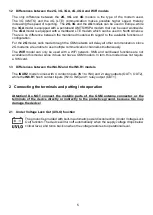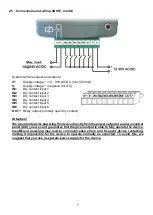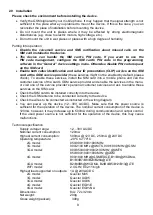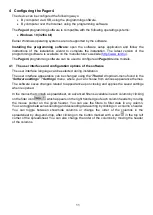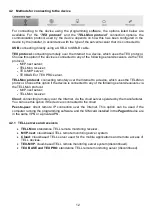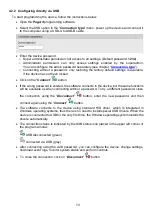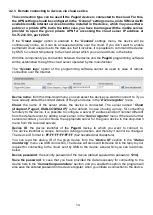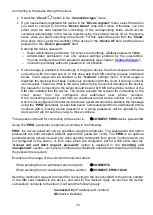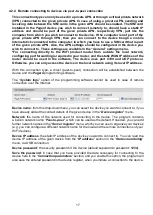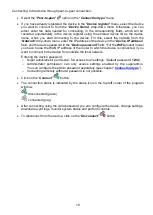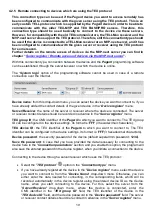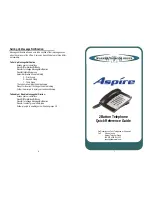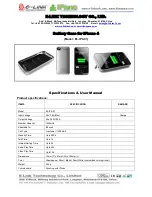
5
1.2 Differences between the 2G, 3G, 3GA, 4G, 4GA and WiFi models
The only difference between the
2G
,
3G
and
4G
models is the type of the modem used.
The 3G (UMTS) and the 4G (LTE) communication makes possible higher speed, thereby
increasing the speed of reporting. The
2G
,
3G
and the
4G
models can be used in Europe, while
the
3GA
model is equipped with a pentaband UMTS/HSPA modem that can be used worldwide.
The
4GA
model is equipped with a multiband LTE modem which can be used in North America.
There is no difference between the mentioned models with regard to the available functions or
configuration.
For the
2G
model, calls made through the GSM network will delay all other communication, since
2G modems are unable to use multiple communication channels simultaneously.
The
WiFi
model can only be used with a WiFi network. SMS and call based functions are not
available in this model, since it does not have a GSM modem. In turn, this model does not require
a SIM card.
1.3 Differences between the IN4.R2 and the IN6.R1 models
The
IN4.R2
model comes with 4 contact inputs (IN1 to IN4) and 2 relay outputs (OUT1, OUT2),
while the
IN6.R1
has 6 contact inputs (IN1 to IN6) and 1 relay output (OUT1).
2 Connecting the terminals and putting into operation
Attention! Do NOT connect the metallic parts of the GSM antenna connector or the
terminals of the device directly or indirectly to the protective ground, because this may
damage the device!
2.1 Under Voltage Lock Out (UVLO) function
The product is provided with built-in automatic power disconnection (Under Voltage Lock
Out) function. The device will turn off automatically when the supply voltage drops below
critical level, and turns back on when the voltage restores to operational level.





